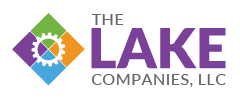Capitalizing On Your Company’s Data

As advanced manufacturing technology such as machine sensors, 3D printing and beacon technology begin to crop up on manufacturing floors and job shops near you, existing technology, data analytics software and robotics for instance, continue to vastly improve. Therefore, what level of expectation will your customers, those people and businesses who buy your products, expect to see in your production facilities?
A simpler way to ask this question is how important is it for manufacturers to stay current with technology?
Consider the omnipresence of data. Created by people online, data collection and analysis is augmented by billions of connected devices all around the world. Luckily, tools are available that enable users to easily visualize and interact with data. Today, Enterprise Resource Planning (ERP) systems generate data for quick and easy analysis using modern tools like Fact-Trak™. Solutions of this nature help decode complex manufacturing processes, revealing insights to help them continuously optimize performance.
Manufacturers can’t wait for the future to conduct business at the data level. Rather it is a core competency, TODAY. And the challenge within that competency is analyzing existing data and making it available, understandable and useful to end users throughout the organization.
Data is the best way to understand an opportunity, design an approach to it, and differentiate. Data is how we know we’re doing well, or faring poorly. Data is how we make decisions, at every level,
says Mashable‘s Josh Jones-Dilworth. A smart business should be able to ask and answer questions based on their own “big data” related to supply chain management, custom product production, performance metrics, preventive maintenance, and production effects on financial performance.
Most companies experience data everywhere, with no information in sight. When properly used, data tells a story,
says The Lake Companies founder and President, Greg Lake. When hearing the word “data”, many people, if not most, think of reporting. Reporting is typically too detailed to tell a story without time-consuming manual analysis. Stories are quickly told via dashboards by providing a 360° view around the subject at hand. That subject might be job performance, shift or department utilization, margin analysis, machine specific Overall Equipment Effectiveness (OEE), inventory turns mapped to product sales performance, or even a 360° view of a customer or vendor.
The breadth of dashboard analysis is immense. If your company is not actively analyzing your company’s data in real-time, you really should get on board. While the majority of companies are not actively performing data analysis, the next generation of analysis is rapidly taking shape. Artificial Intelligence is already well above the horizon. Think of the potential when your business intelligence engine can tell you that a product’s delivery and profitability is being consistently and seriously eroded by components that experience setup and efficiency issues with raw material that is tracked back to a specific vendor. You cannot get to second base without stepping on first. Fact-Trak provides a Simple, Elegant and Powerful way to start your journey toward actionable information that pays for itself over and over again, in a multitude of ways.
In their article, How Big Data Can Improve Manufacturing, McKinsey and Company offers a big data use case in pharmaceutical manufacturing. A biopharmaceutical company was using live, genetically engineered cells and tracking 200 variables to track the purity of its manufacturing process for vaccines and blood components. However, two batches of the same substance manufactured using identical processes showed a yield variation from 50 to 100 percent. The inconsistency in capacity and quality could attract regulatory attention.
The project team segmented its manufacturing processes into clusters of activity. Using big data analytics the team assessed process interdependencies and identified nine parameters that had a direct impact on vaccine yield. By modifying target processes the company was able to increase vaccine production by 50 percent resulting in savings between $5 and $10 million annually.
When your business analyzes critical information and “big data” with Fact-Trak, both your company and your customers benefit through reduced costs, increased cash flow, improved product quality and streamlined operations. The enhanced analytical ability that Fact-Trak provides will bring you insight into sales, costs, productivity, backlog, delivery performance and many other business trends. Critical to proactive daily decision-making, these key metrics positively impact your company, uncovering clarity and boosting confidence to your business operations.


Comments are closed.